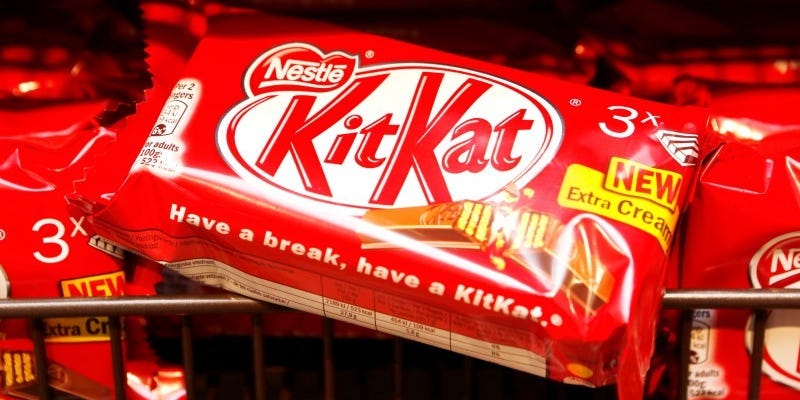- Food inflation rose 5.7% during the first six months of 2023, according to the Consumer Price Index.
- But major food companies, from Nestlé to Unilever, increased prices much more than that.
- The companies also reported higher profits in the latest round of earnings reports.
Food inflation is supposedly slowing down, with prices even shrinking in some categories. But what you pay for your favorite snacks at the store is still going up.
The world’s biggest food companies spent the first half of this year raising prices, according to several earnings reports released this week. Nestlé, the maker of KitKat candy and NesCafe coffee, raised prices 9% during the first six months of 2023. Coca-Cola’s average selling prices were 10% higher during its second quarter, while rival PepsiCo’s were 15% higher.
But in the US, food prices rose 5.7% over the first six months of the year, per the Consumer Price Index.
Many consumers have kept buying their favorite packaged foods, even if it has meant paying more.
Ramon Laguarta, the CEO of PepsiCo, said earlier this month that consumers have continued buying the company’s brands, including Quaker Oats and Gatorade, even as they’ve become more expensive. “We’ve been able to raise prices, and consumers stay within our brands,” he said during an earnings call.
Some external factors have impacted the costs that major food companies pay to produce their products. The continuing war in Ukraine, for example, has kept some grain prices higher than normal.
But companies face fewer fast-changing costs today than during the early years of the pandemic. And, as their earnings this week show, much of the price increases are going to companies’ bottom line.
Coca-Cola, for instance, posted an 11% increase in earnings per share for its second quarter. At Nestlé, they also rose 11%, while PepsiCo’s profit almost doubled in its latest quarter over 2022.
These profits have led some to say that greedflation, or companies raising prices to pad their profits, is now driving price increases for products like food. It’s especially easy for global food companies to raise prices, given that a few companies own most of the brands in many US grocery stores.
Persistently increasing prices could also help make it more appealing for the Federal Reserve to increase interest rates going forward, the New York Times reported on Wednesday.
But there’s some evidence that consumers aren’t willing to put up with higher food prices indefinitely.
Several of the companies that raised prices also said that sales volumes, or the actual number of products they sold, fell over the last year. When companies raise prices too much or too quickly, consumers stop buying and look for alternatives. That happened earlier this year to Clorox, the company behind Kingsford charcoal. It raised prices but consumers turned to buying Walmart-brand charcoal instead.
Coca-Cola CEO James Quincey said in an earnings call on Wednesday that some consumers in the US and Europe have started to buy cheaper versions of the company’s drinks. “We have seen some willingness to switch to private label brands in certain categories,” Quincey said.
Some retailers have expanded their own-brand offerings to take advantage. Dollar General has recently expanded its private label food line Clover Valley to include 600 products.
And some consumers are also changing where they buy their favorite snacks, if not defecting to store brands
“They are buying more in Dollar stores or they buy more in mass or in clubs,” PepsiCo’s Laguarta said, referencing mass retailers like Walmart and chains like Costco and Sam’s Club, which are known in the retail industry as “club retailers.”
Read the full article here





